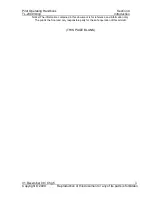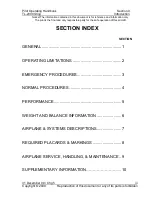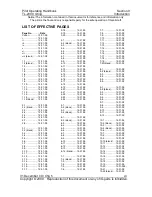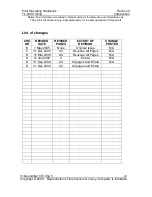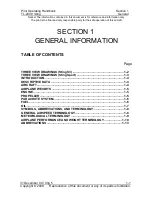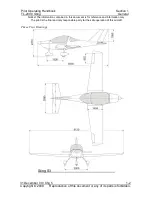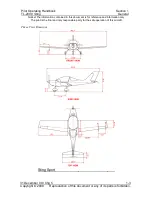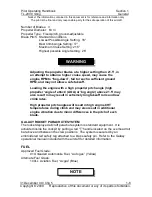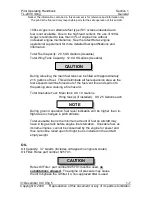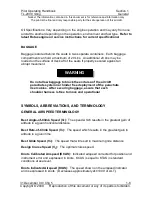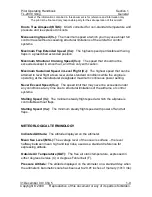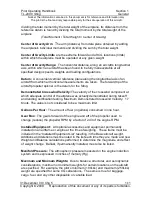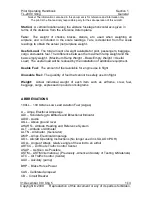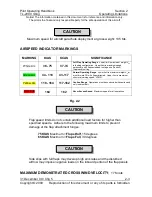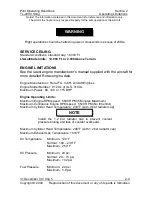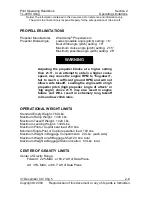
Pilot Operating Handbook
Section 1
TL-2000
Sting
General
Notice! The information contained in this document is for reference and information only.
The pilot is the final and only responsible party for the safe operation of this aircraft.
31 December 09 / Chg 5
1-8
Copyright © 2009 Reproduction of this document or any of its parts is forbidden.
Oil Specifications: Vary depending on the engine operation and may vary from one
aircraft to another depending on the operation, environment and fuel type.
Refer to
latest Rotax engine oil service instructions for current specifications!
BAGGAGE
Baggage is stored behind the seats in two separate containers. Each baggage
compartment can hold a maximum of 20 Lbs. An additional 20 Lbs may be
loaded on the surface of deck aft of the seats if properly secured against an
abrupt movement.
Do not allow baggage to block the exit area of the aircraft
parachute system nor hinder free deployment of the parachute
riser cables. After securing baggage, assure that each
shoulder harness is free to move and operational
.
SYMBOLS, ABBREVIATIONS, AND TERMINOLOGY
GENERAL AIRSPEED TERMINOLOGY
Best Angle-of-Climb Speed
(V
X
):
The speed which results in the greatest gain of
altitude in a given horizontal distance.
Best Rate-of-Climb Speed (V
Y
):
The speed which results in the greatest gain in
altitude in a given time.
Best Glide Speed (V
G
):
The speed that will result in maximum glide distance.
Design Cruise Speed (V
C
):
The optimal cruise speed.
Knots Calibrated Airspeed (KCAS):
Indicated airspeed corrected for position and
instrument error and expressed in knots. KCAS is equal to KTAS in standard
conditions at sea level.
Knots Indicated Airspeed
(KIAS):
The speed shown on the airspeed indicator
and is expressed in knots. (Decreases approximately 2kt/1000’ of ALT.)
WARNING

